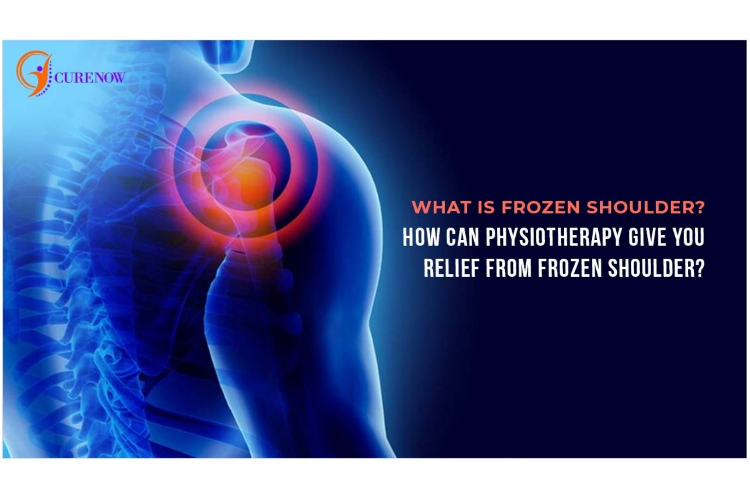
- 19 Jan 2021
- |
- By Admin
What Is Frozen Shoulder? How Can Physiotherapy Give You Relief From Frozen Shoulder?
Frozen Shoulder: Definition
Medically termed as Adhesive Capsulitis, a frozen shoulder is a painful condition wherein the movement of the shoulder becomes restricted and limited. When the patient attempts to do any activity which requires shoulder movement, moderate to severe pain is experienced.
The state of the frozen shoulder usually happens when the connective tissues around the shoulder joint become stiff, inflamed, and thick. Some experts also claim that a frozen shoulder can happen due to autoimmune reactions, due to several reasons.
Reasons Behind Frozen Shoulder
Some of the possible reasons include:
-Immobilized arm for a long period of time. For example, the patient had a fracture, and the arm was in a sling for an elongated period.
-The patient is already suffering from another cause, such as arthritis, or bursitis, or even a rotator cuff tear, tendonitis, etc. The pain from such conditions can trigger a frozen shoulder.
-A reaction to the shoulder from an injury or accident
How To Diagnose Frozen Shoulder?
In most of the cases, it has been observed that the diagnosis of frozen shoulder happens very late, usually after 3-4 months since the patient encountered the 1st symptoms.
This is because the patient assumes that the pain will go away and he/she continues with daily activities while tolerating the pain.
In order to properly diagnose the condition of frozen shoulders, the Physiotherapists will look out for the capsular pattern, which is a decreased range of motions due to the pain associated with frozen shoulders.
Proper health history is investigated, and the therapists look for some general conditions which are usually associated with frozen shoulder patients such as diabetes, autoimmune disorders, and/or thyroid disorders.
How Can Physiotherapy Give Relief From Frozen Shoulder?
Effective and timely physiotherapy can help patients with frozen shoulder to restore their normal activities and body movements, without pain.
The main goal of physiotherapy in the cases of frozen shoulder is to restore the movements, via targeted exercises and physical therapy.
There are 4 stages of treatment involved here:
Stages 1 and 2
Using a combination of a range of motion exercises and manual therapy, the physiotherapist will attempt shoulder movement, with minimum pain. The patient is advised not to resort to aggresive exercises, else the pain may become worse.
Besides, home-based treatment will be also suggested, based on the severity of the pain.
Some medications can also be prescribed, to manage the pain.
Stage 3
While Stages 1 and 2 are focused on maintaining shoulder movements with the minimum, bearable pain, Stage 3 is designed for return of motion.
Physiotherapists recommend stretching exercises, strengthening exercises, and manual therapy so that the muscles and tissues loosen up and there is more flexibility and more movements.
Stage 4
While the steps of Stage 3 are repeated in this phase, the focus here is to return to the normal. During Stage 4 therapy, the patient is encouraged to return to his/her normal range of motions, conduct normal day to day activities in a painless environment.
If you are seeking expert guidance and therapy to get relief from shoulder pain, then we at CureNow Wellness Physiotherapy are there to help you. Our UK trained and certified physiotherapists are experienced and seasoned, with deep knowledge and expertise of treating frozen shoulder condition.
- Neuromuscular Physiotherapy: This Is How Brain, Nerves & Spinal Cord Disorders Can Be Treated
- Spinal Cord Injury: 3 Spine Physiotherapy Treatments Recommended By Experts
- What Is Cardiovascular Physiotherapy? What Are The Benefits Of Physiotherapy In Cardiac Rehab?
- What Is Musculoskeletal Physiotherapy?
© Copyright CURENOW . All Rights Reserved. Presented By
RISIAR Step In Business Hub Pvt Ltd